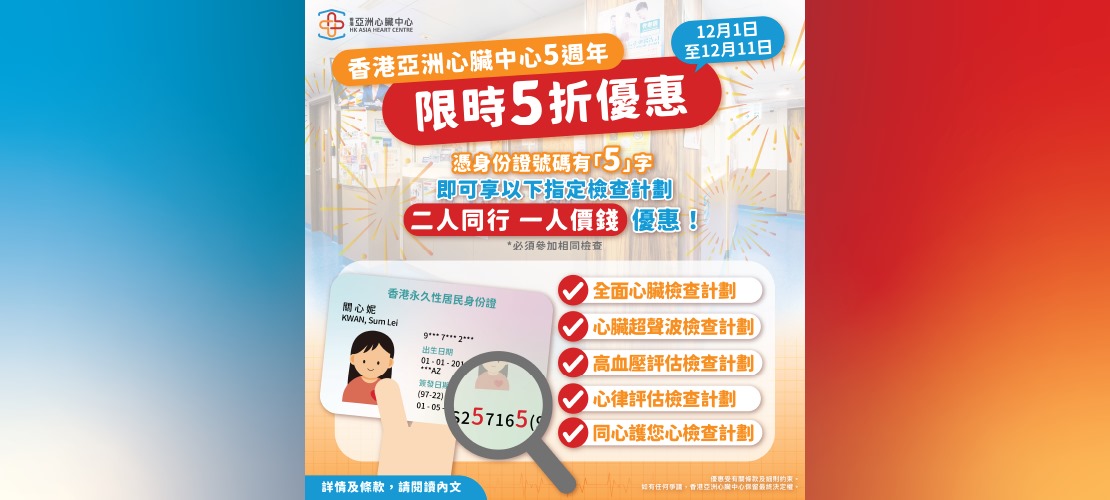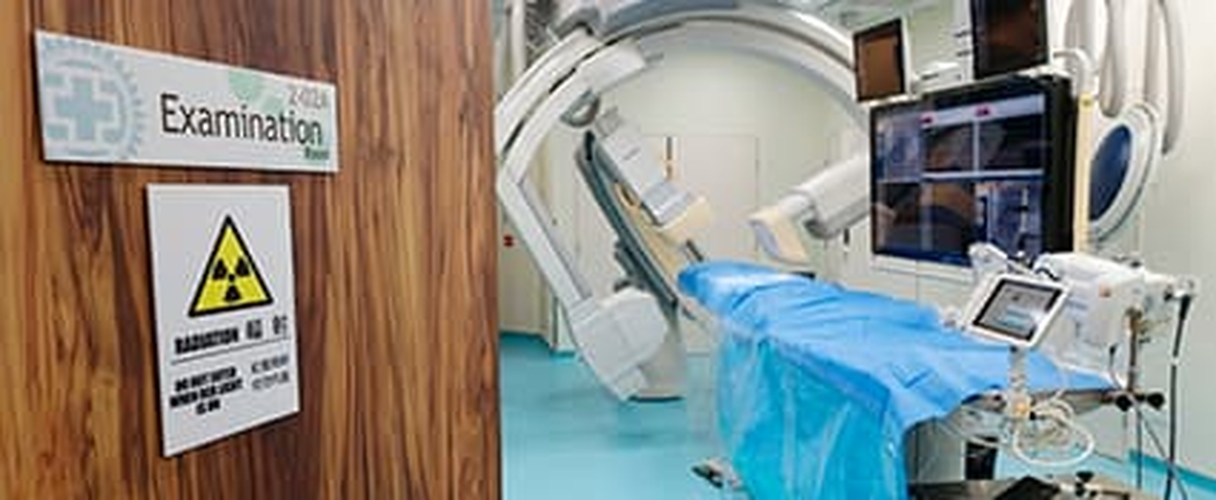Electro-Physiology Study (EPS) & Radio Frequency Ablation (RFA)
Electro-Physiology Study (EPS) & Radio Frequency Ablation (RFA) | Hong Kong Asia Heart Centre
Heart rhythm is mainly controlled by the conduction system of the heart. Any abnormality in the conduction system may result in abnormal heart rhythm (arrhythmia).
Electro-Physiology Study (EPS) is a test to find out the cause of arrhythmia. A patient suffering from arrhythmia may have palpitation, chest discomfort, dizziness or vertigo. In severe condition, the patient may lose consciousness or have sudden death. Radio frequency (RF) energy has been used since 1990 to ablate cardiac arrhythmia. This energy is released at the tip of the catheter to local cardiac tissue, within which the conduction property will be lost. The result will be the successful cure of the arrhythmia.
Proccess:
- This invasive procedure is generally performed under local anesthesia in the Cardiac Catheterization & Intervention Laboratory (CCIL). You are alert during the procedure, but we may give you sedation if needed.
- Electrodes are adhered to the chest to monitor the heart rate and rhythm. Blood oxygen monitor through your fingertip will be set up. Measurement of blood pressure from your arm will be taken during the examination.
- Small wounds are made over the groin, under the clavicle or around the neck for access to arteries or veins.
- Catheters are advanced to the heart under X-ray guidance. At specific sites inside the heart, we will record electric information; we then deliver tiny electric current to alter your heart rate and try to trigger arrhythmias.
- You may experience discomfort when your heart is being excited to certain rate; when an induced arrhythmia is persistent, we may use direct current (DC) cardioversion to convert it.
- RF energy will be delivered to the target site for around 60 seconds via special RF catheter. You may experience slight chest discomfort during delivery of energy.
- After RFA, another EPS will be carried out to confirm the success of the procedure.
- The duration of the procedure could last from 3 hours to over 5 hours depending on the nature and complexity of the arrhythmia.
- You will be sent to the ward for observation for another 12-24 hours.
After Procedure:
- Usually you can be discharged 1 day after the procedure.
- The wound will be inspected and covered with light dressing. Please keep the wound site clean and change dressing if wet. In general, showers are allowed after 2 days.
- Please avoid vigorous activities (household or exercise) in the first 3 days after the procedure.
- Bruising around the wound site is common and usually subsides 2-3 weeks later. If you notice any signs of infection, increase in swelling or pain over the wound, please come back to the hospital or visit a nearby Accident and Emergency Department immediately.
- During subsequent follow-up, our medical staff will explain to you the results of the procedure and discuss on any subsequent plan of management. You are advised to ask your close relatives to join the interview.
Heart rhythm is mainly controlled by the conduction system of the heart. Any abnormality in the conduction system may result in abnormal heart rhythm (arrhythmia).
Electro-Physiology Study (EPS) is a test to find out the cause of arrhythmia. A patient suffering from arrhythmia may have palpitation, chest discomfort, dizziness or vertigo. In severe condition, the patient may lose consciousness or have sudden death. Radio frequency (RF) energy has been used since 1990 to ablate cardiac arrhythmia. This energy is released at the tip of the catheter to local cardiac tissue, within which the conduction property will be lost. The result will be the successful cure of the arrhythmia.
Proccess:
- This invasive procedure is generally performed under local anesthesia in the Cardiac Catheterization & Intervention Laboratory (CCIL). You are alert during the procedure, but we may give you sedation if needed.
- Electrodes are adhered to the chest to monitor the heart rate and rhythm. Blood oxygen monitor through your fingertip will be set up. Measurement of blood pressure from your arm will be taken during the examination.
- Small wounds are made over the groin, under the clavicle or around the neck for access to arteries or veins.
- Catheters are advanced to the heart under X-ray guidance. At specific sites inside the heart, we will record electric information; we then deliver tiny electric current to alter your heart rate and try to trigger arrhythmias.
- You may experience discomfort when your heart is being excited to certain rate; when an induced arrhythmia is persistent, we may use direct current (DC) cardioversion to convert it.
- RF energy will be delivered to the target site for around 60 seconds via special RF catheter. You may experience slight chest discomfort during delivery of energy.
- After RFA, another EPS will be carried out to confirm the success of the procedure.
- The duration of the procedure could last from 3 hours to over 5 hours depending on the nature and complexity of the arrhythmia.
- You will be sent to the ward for observation for another 12-24 hours.
After Procedure:
- Usually you can be discharged 1 day after the procedure.
- The wound will be inspected and covered with light dressing. Please keep the wound site clean and change dressing if wet. In general, showers are allowed after 2 days.
- Please avoid vigorous activities (household or exercise) in the first 3 days after the procedure.
- Bruising around the wound site is common and usually subsides 2-3 weeks later. If you notice any signs of infection, increase in swelling or pain over the wound, please come back to the hospital or visit a nearby Accident and Emergency Department immediately.
- During subsequent follow-up, our medical staff will explain to you the results of the procedure and discuss on any subsequent plan of management. You are advised to ask your close relatives to join the interview.
Share


